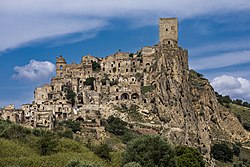This article needs additional citations for verification .(November 2020) |

The following is an incomplete list of ghost towns , listed by continent, then by country.
Contents
- Africa
- Angola
- Central African Republic
- Egypt
- Ethiopia
- Ivory Coast
- Mauritania
- Morocco
- Namibia
- South Africa
- Sudan
- South Sudan
- Western Sahara
- Antarctica and sub-Antarctic islands
- Deception Island
- South Georgia and the South Sandwich Islands
- Asia
- Azerbaijan
- Bangladesh
- British Indian Ocean Territory
- Cambodia
- China
- Cyprus
- Gaza Strip
- Georgia
- India
- Indonesia
- Iran
- Japan
- Kazakhstan
- Kyrgyzstan
- Laos
- Lebanon
- Malaysia
- North Korea
- Oman
- Qatar
- Russia
- Saudi Arabia
- Singapore
- Syria
- Taiwan
- Tajikistan
- Thailand
- Turkey
- Uzbekistan
- United Arab Emirates
- Europe
- Albania
- Austria
- Belarus
- Belgium
- Bulgaria
- Bosnia and Herzegovina
- Croatia
- Czech Republic
- Estonia
- Faroe Islands
- Finland
- France
- Germany
- Greece
- Hungary
- Iceland
- Ireland
- Italy
- Latvia
- Lithuania
- Netherlands
- Norway
- Poland
- Portugal
- Romania
- Spain
- Sweden
- Switzerland
- Ukraine
- United Kingdom
- North America
- Canada
- Costa Rica
- Dominica
- Greenland
- Guatemala
- Mexico
- Montserrat
- Saint Pierre and Miquelon
- United States
- Oceania
- Australia
- Kiribati
- New Zealand
- South America
- Argentina
- Brazil
- Chile
- Colombia
- French Guiana
- Guyana
- Peru
- Venezuela
- See also
- References
- External links


























